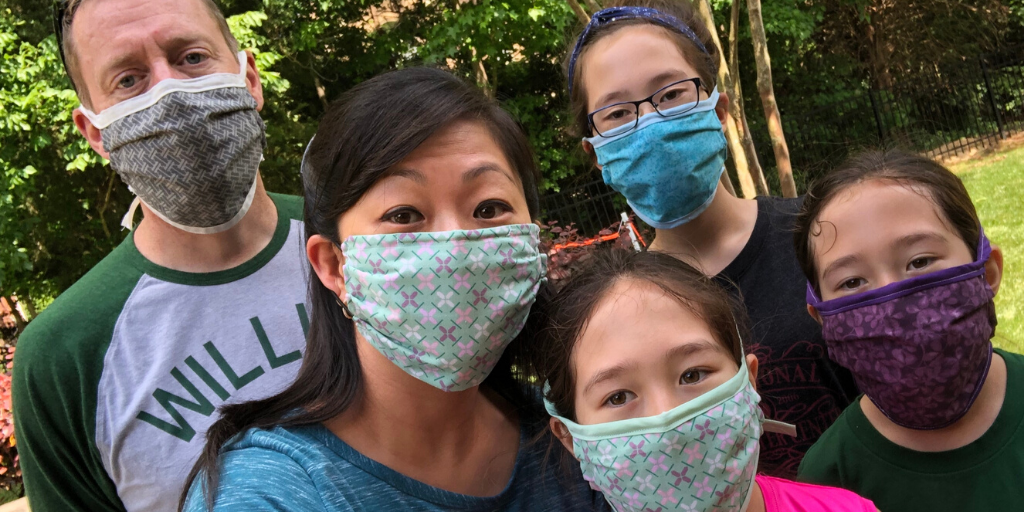
As we have entered North Carolina’s three-step plan to reopen the economy after the spread of COVID-19, it is important to think about the safest ways for your family to take these steps. According to the Centers for Disease Control and Prevention (CDC), this includes wearing a mask if you are in a situation that prevents social distancing. Many businesses now require that masks are worn in order to enter their facilities (Costco, doctors offices, dentists, etc.).
So you know that you need to have a mask, but how do you know the best one to choose? Whether you’re looking to purchase one or make your own, Dr. Caroline Wilds from Tryon Medical Partners is here to provide the answers to your questions (and has personal experience, having just made masks at home with her own family!).
What material is best?
100% cotton is the preferred material, and masks should have more than one layer (you may see “3-ply” or something similar listed) to filter out particles. Choose a cotton that does not stretch and is not too thin (for these reasons, jersey material is not a good choice). It is best to avoid using synthetic fabric, as it provides a less effective filter.
What should I be looking for in a face mask?
According to the CDC, cloth masks should meet five criteria:
- Fit snugly but comfortably against the face, covering the mouth and nose
- Be secured either around the ears or behind the head
- Include multiple layers of fabric
- Allow for breathability
- May be washed and dried frequently, without affecting the shape of the mask
How do I make my own?
You probably already have the material you need at home to make your own mask — think old cotton t-shirts, bandanas or bed sheets (the higher the thread count the better!). Fold over the material to make it multi-layered. Add rubber bands or elastics, and voila!
Check out this :45 video tutorial from U.S. Surgeon General Dr. Jerome Adams on the CDC website. There are also “sew” and “no sew” instructions from the CDC included here.
Who should be wearing face masks? And who shouldn’t?
It is recommended that everyone wear a mask when it is not possible to maintain a social distance of at least six feet. Those with preexisting health conditions and older adults are considered higher risk and should definitely wear a mask as a rule. Anyone under the age of two should not wear a mask, since there is the risk of suffocation. Additionally, if you think your older child would be more apt to touch their face when wearing a mask, it may be a better idea for them to go without, because the virus can spread by touching the face. Otherwise, it’s a smart choice to have your children wear masks as well.
Should I wear a mask when I’m outside exercising?
As long as you are able to maintain social distancing protocol, it is not necessary to wear a mask while exercising outside, as the risk of spreading disease is lower, and it may make breathing more difficult. In metropolitan areas, it may be necessary to take this protective measure but if you are able to keep your distance from others, masks are not needed outside.
What kind of masks should you avoid wearing?
While we are all working together to help keep each other safe, remember to leave the surgical masks and N95 masks for the healthcare workers. They are the ones battling this virus on the frontlines, and we need to ensure that they have the necessary supply.
Valve masks, a type of N95 mask, should also be avoided, as they only protect the wearer by filtering the air breathed in but not the air breathed out. Since the main purpose of wearing a mask is to protect others from exhaled air that may contain coronavirus droplets, these valve masks are not recommended as a social distance measure.
To recap, as we look at the months ahead in fighting against the spread of COVID-19, it is important to remember:
- Wear a face mask when social distancing is not possible.
- Multi-layered cotton is the best material.
- The mask should fit snugly but comfortably on your face, most importantly covering your nose and mouth.
- Masks should be washed after wear.
Whether you choose to make your own mask or purchase one online, know that you are helping to protect others as they are helping to protect you.

